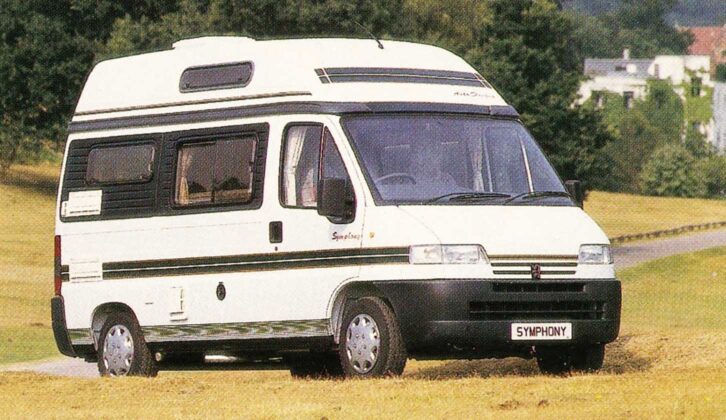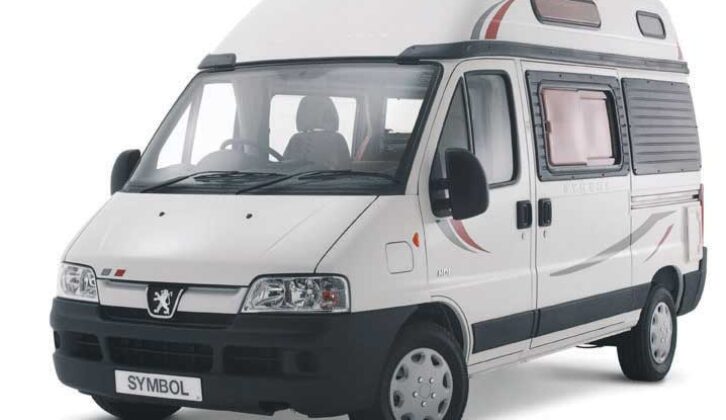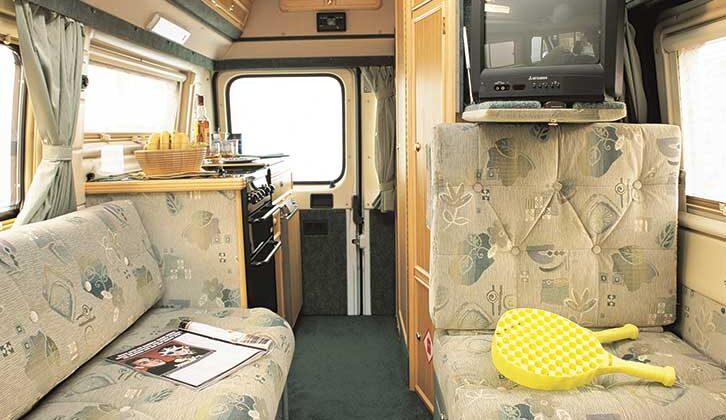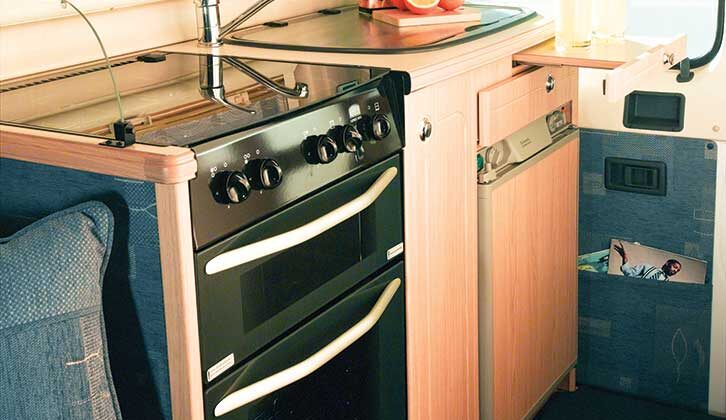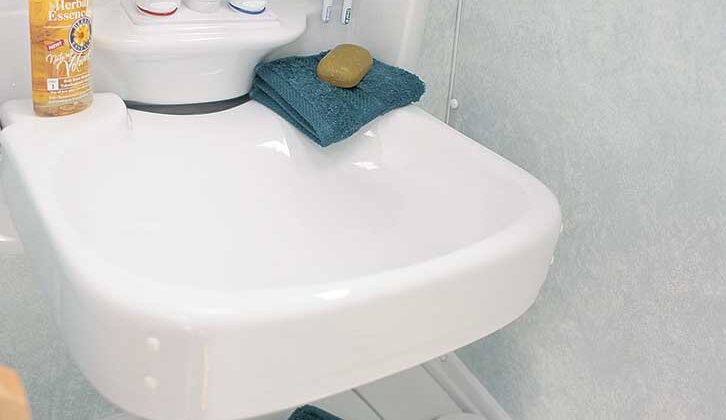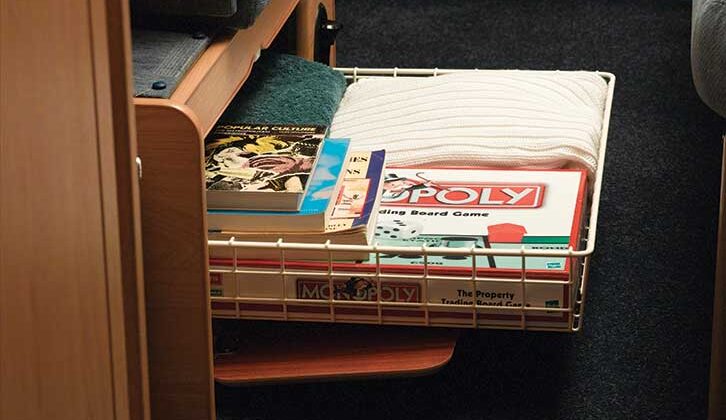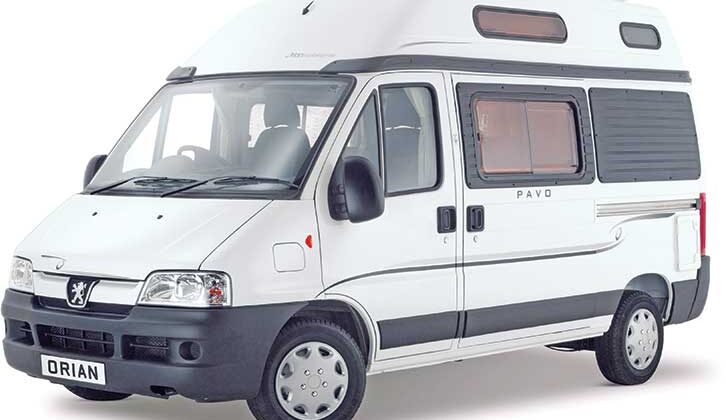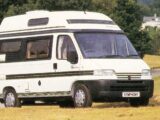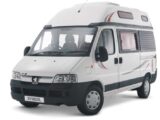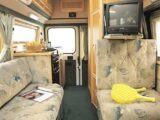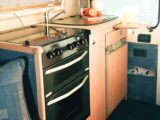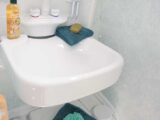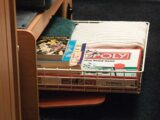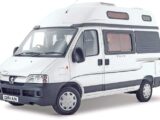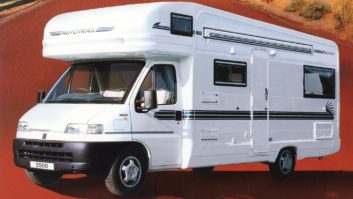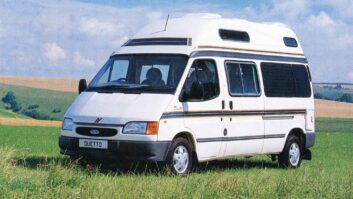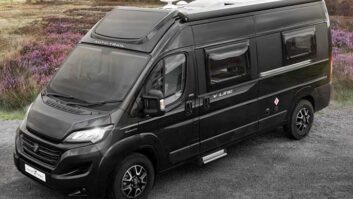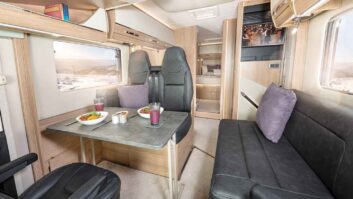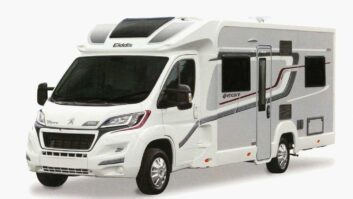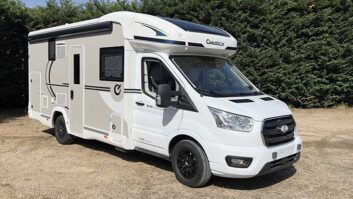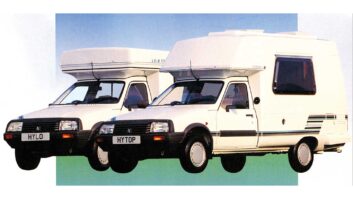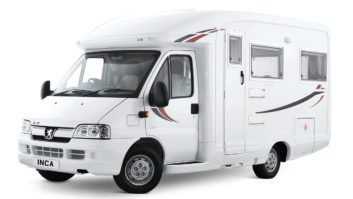Auto-Sleepers was founded by Calverley Trevelyan in the early 1960s and is the UK’s oldest volume converter. Symphony and its little sister, the short-wheelbase Harmony, were transferred to the ‘all new’ Peugeot Boxer from its predecessor, the Talbot Express.
This is unsurprising, as from launch, they had always been strong sellers, and the Symbol remains so today. All were built on the five-door incarnation of the Boxer, fitted with a stylish GRP high-top designed by Auto-Sleepers, unlike the recently launched M-Star, which is based on a Mercedes Sprinter.
Entering via the side sliding door into the lounge, you find a two-seat inward-facing offside settee, a nearside forward-facing travel seat and a brace of swivelling cab pews.
Two tables of different sizes both perch on floor-located island legs, facilitating easier movement around the ’van when a table is deployed.
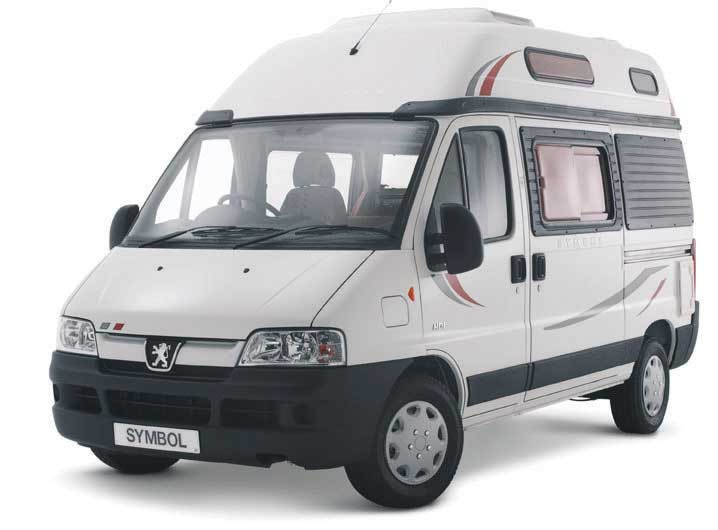
A well-equipped linear rear galley is along the offside wall. Early models offered a two-burner hob, a separate grill and an oven. Later ones boasted a slot-in domestic-style dual-fuel cooker. All have an inset stainless-steel sink with draining surface and a three-way fridge with freezer compartment. Opposite is a wardrobe, ahead of the corner washroom.
Standard sleeping accommodation consisted of the choice of a transverse double bed or two easy-access singles. The latter used the cab seat squabs.
The beds do require some cushion shuffling, but provided it is undertaken in the correct order, this isn’t arduous.
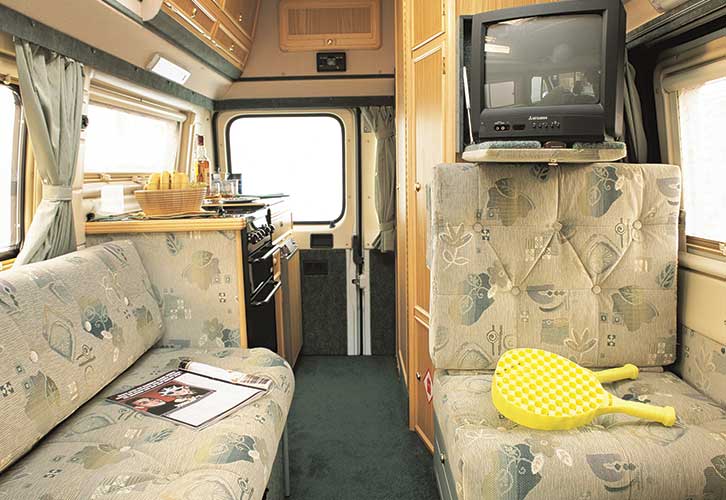
Most had A-S signature cabinetwork with fitted hardwood-framed doors and drawers. No knock-in edging and lay-on doors here, and only the best soft furnishings, featuring plush fabrics with buttoned, panelled upholstery.
The only change to the motorhome’s layout was from 2002 onwards and this was an ES option (extra travel seat).
Every inch of possible storage space was made good use of, and that also included dedicated stowage for 6kg and 4.5kg exchangeable gas cylinders.
At launch, standard motive power was a 2.0-litre petrol engine, which drove the front wheels via a manual five-speed gearbox with the (then) cutting-edge fascia-mounted gearlever.
A rather asthmatic 1.9-litre naturally aspirated diesel was an option on the lighter 270M models, and a 2.5-litre diesel an option on the heavier 350M variants. The big diesel was available as a nat-asp, or with a turbocharger and intercooler.
In 1997, a further engine option was added across the range: the 1.9-litre turbodiesel, an absolute bell-ringer, really spirited and good on fuel.
The Symbol launched two years later, similar to the Symphony, but with a slightly different roof incorporating a Heki panoramic rooflight. In 2001, the demise of Carver, which provided the water- and space-heaters, forced a change to Truma units.
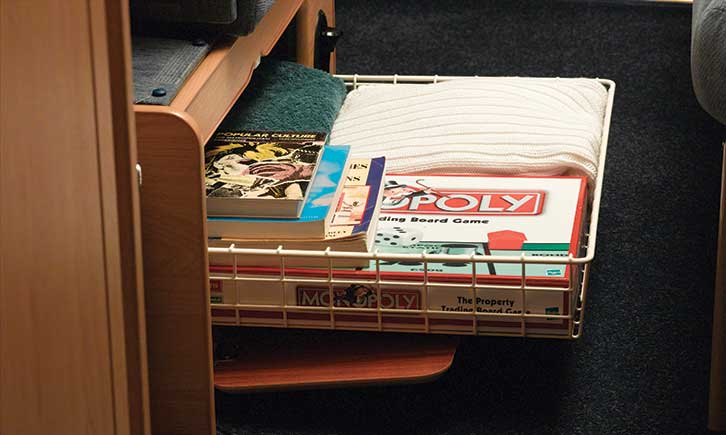
Peugeot heavily facelifted the base vehicle for the 2002 model year, which included upgrading the engines to a 2.2-litre 85/100bhp TD and a 2.8-litre direct-injection 127bhp TD. Symphony retired, but Symbol continues to this day on the latest Boxer or Fiat Ducato.
Alloy wheels became standard for the 2003 season, and a change to more contemporary Italian-style furniture was phased in at that point.
For a brief period, the Symbol was also badged as Orion Pavo – presumably to boost the number of dealers.
I first carried out a live-in test of the Symphony in 1994, when I described it as “a van conversion that thinks it’s a coachbuilt”. That was true then and remains so today.
What to look out for with an Auto-Sleeper Symphony & Symbol
Base vehicle
By and large, these vehicles are reliable and pretty much trouble-free, things that you always look for when you’re looking for the best campervan.
The only exception was a tendency for early models to drop fifth gear, but this is a (relatively) cheap and uncomplicated repair, which doesn’t involve removing the gearbox – and the Pug will get you home in fourth!
The 270M models only had a limited payload, but this can be upgraded retrospectively. Look for a full service history and long MoT, and check the age of the tyres.
Many commercial examples cover more than a quarter of a million miles with no problems, but regular oil changes using quality lubricants are a key requirement. The 2.0-litre petrol engine is smooth and civilised and can easily be converted to run on LPG.
Conversion
These quality-build ’vans have usually been owned by well-heeled, caring folk without accompanying children. If it looks worn, walk away, because there will be plenty that aren’t.
The oldest will be 28 years young, so if you are buying one ‘with experience’, keep some dosh in reserve for the inevitable replacement of white goods.
Fit a smoke alarm, fire blanket and extinguisher, and make sure that the gas and electric systems have been safety-checked and serviced by a qualified engineer.
Our pick
All except the rare ES model have the same layout – so no favourites! The rest provide two sleeping berths and three travel seats. Any engine, but best to avoid a 1.9 nat-asp, unless it’s at a dagger-sharp price, leaving enough for a retrofit turbocharger. Buy on condition, not age.
What to pay for an Auto-Sleeper Symphony & Symbol
Even the cheapest were over £25,000 at launch. They remain a premium product, at a commensurate price. However, because they’ve been in production for so long, there are quite a few available from around £9500 privately and from £12,000 trade (for example, at Somerset Trade Campers).
The price for a brand new one today is from £74,745. Customers on a very limited budget should look out for examples on the earlier Talbot Express. Available from £3500 (fixer-uppers) and from £6500 ready-to-roll, in fine fettle, and with full MoT.
Alternatives to an Auto-Sleeper Symphony & Symbol
Auto-Sleeper high-tops: Rambler and Harmony on SWB Boxer, Duetto on Ford Transit. Swift Mondial or Bessacarr E300 series on Boxer/Ducato.
After a different type of Auto-Sleepers ‘van? Then head to our best small campervan guide, where we look at the Air.
- See what Gentleman Jack made of the Auto-Trail F-Line Range
If you’ve enjoyed reading this article, why not get the latest news, reviews and features delivered direct to your door or inbox every month. Take advantage of our brilliant Practical Motorhome magazine SUBSCRIBERS’ OFFER and SIGN UP TO OUR NEWSLETTER for regular weekly updates on all things motorhome related.
